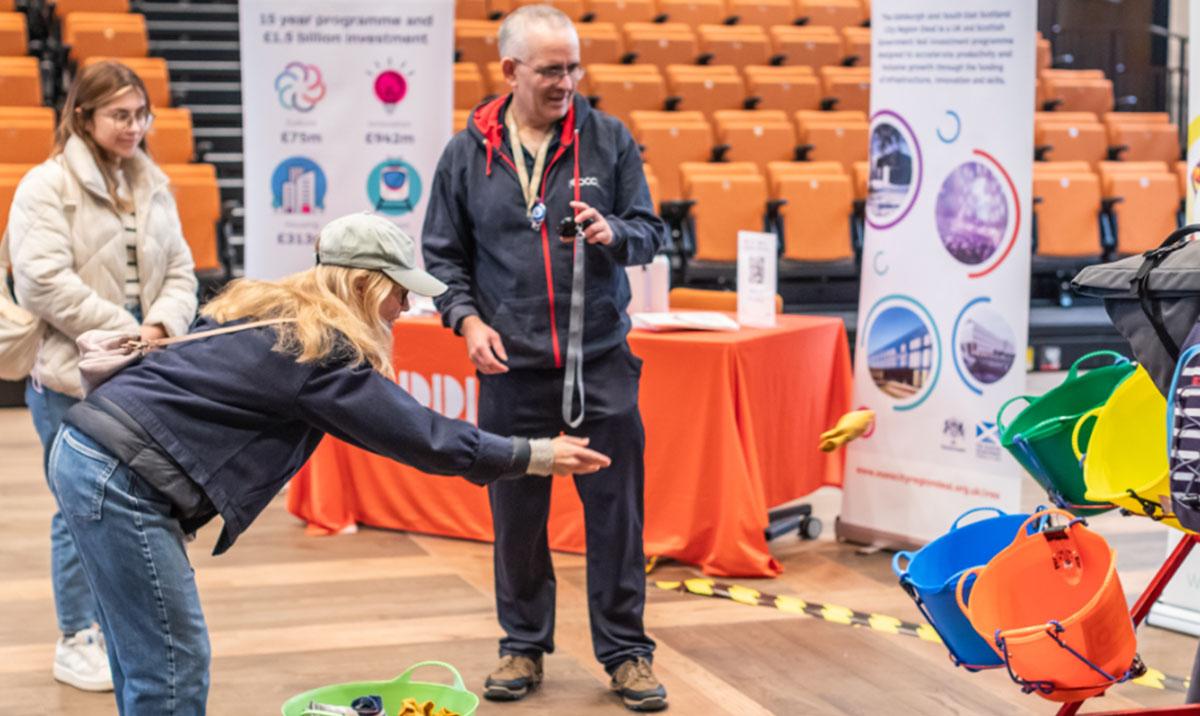A review of Doors Open Day 2024
22 October 2024
Doors Open Days allow us to inform the public about what we do and encourage younger participants to follow STEM-based careers.

September 28th and 29th saw EPCC participating in the University of Edinburgh’s Doors Open Days at the Edinburgh Futures Institute (EFI), the gloriously refurbished old Edinburgh Royal Infirmary.
We took along our parallel sorting activity, which is my personal favourite. This activity has evolved since we first developed it, from plastic balls that went all over the place to beanbags. But these did not cater for colour-blind individuals, so our current offering uses beanbags wrapped in socks which provide identifiable patterns and also facilitates cleaning of the equipment.
The activity involves a participant sorting as many sock-wrapped beanbags as they can in 30 seconds. We tabulate their scores on a piece of graph paper, with the number of objects sorted in the y-axis and the number of people involved in the activity along the x-axis. We also encourage visitors to perform the same sorting task with others and tabulate the scores on the same graph. A scaling curve rapidly develops as more people become involved, resulting in a heterogeneous system and hence a large spread of measurement.

This is a trivially parallel activity with no dependencies, and you can show small-scale parallelism at work where increasing the number of people yields better results. You can also draw many real-life analogies regarding the issues that compromise scaling.
This naturally leads to a virtual reality (VR) tour of ARCHER2, the UK national supercomputing service operated by EPCC. As we cannot take ARCHER2 to the people, we virtually take people to ARCHER2 using a VR headset, which makes this immersive experience even more novel.

Finally, having demonstrated how small-scale parallelism can provide an immediate benefit to performance and shown what a supercomputer looks like, we also provide postcards with attractive images of the science that is undertaken on ARCHER2.
On the 29th of September we were also at the Bayes Centre, the building in central Edinburgh in which the larger part of EPCC is based. Here our colleagues presented our Raspberry Pi-based model supercomputer, Wee Archie, and also provided a virtual tour of ARCHER2.
As always at such events we met many interesting people, including one woman who had worked at Cray and had met Seymour Cray over pizza. The days were exhausting but we met several hundred people and the reaction was overwhelmingly positive.
All images by Chris Scott.
Links
Outreach at EPCC: https://discover.epcc.ed.ac.uk
ARCHER2: https://www.archer2.ac.uk
Doors Open Days UK: https://www.doorsopendays.org.uk

